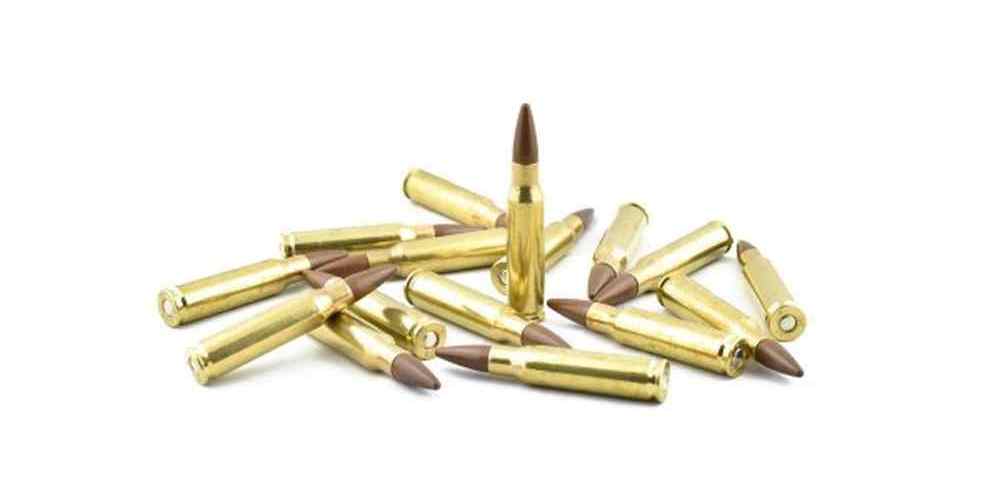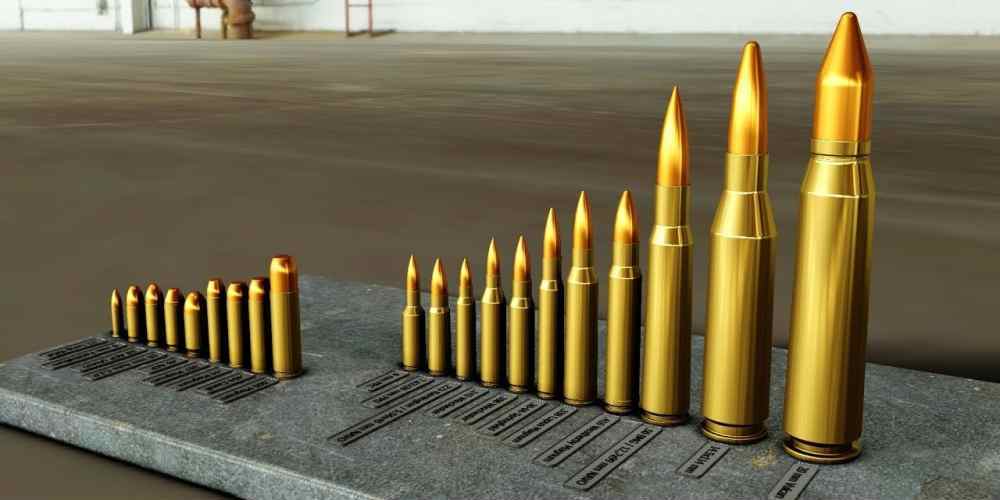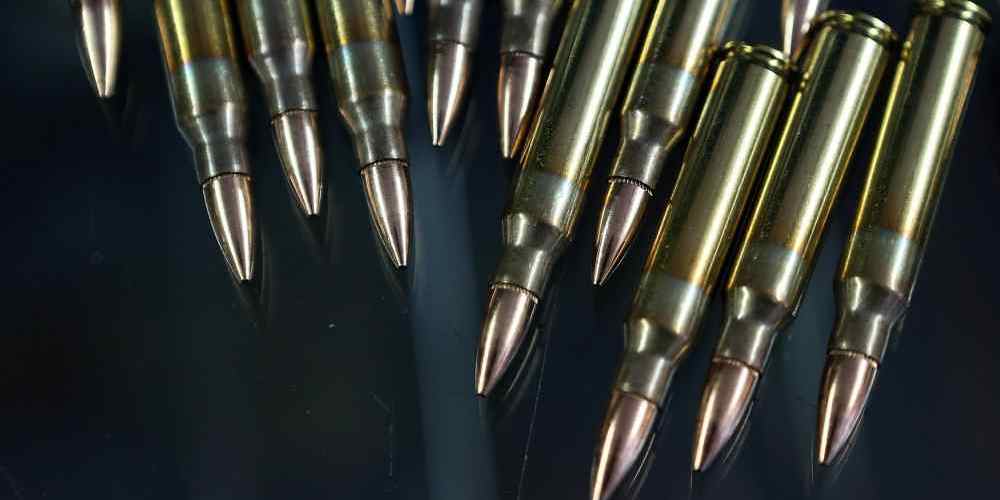“Unlock the power of precision with a deep dive into rifle ammunition pressure ratings.”
The Importance of Understanding Rifle Ammunition Pressure Ratings
When it comes to shooting rifles, understanding ammunition pressure ratings is crucial for both safety and performance. The pressure generated by a round of ammunition when fired can have a significant impact on the rifle, the shooter, and the target. In this article, we will explore the importance of understanding rifle ammunition pressure ratings and how they can affect your shooting experience.
Rifle ammunition pressure ratings refer to the amount of pressure that is generated within the cartridge when the round is fired. This pressure is measured in pounds per square inch (psi) and can vary depending on the type of ammunition being used. Understanding these pressure ratings is important because exceeding them can result in catastrophic failure of the rifle, causing injury to the shooter and potentially damaging the firearm.
One of the key reasons why understanding rifle ammunition pressure ratings is important is safety. Exceeding the recommended pressure ratings can cause the rifle to malfunction, leading to potentially dangerous situations. In extreme cases, the rifle can explode, causing serious injury or even death to the shooter. By knowing and adhering to the pressure ratings of your ammunition, you can help ensure a safe shooting experience for yourself and those around you.
In addition to safety concerns, understanding rifle ammunition pressure ratings can also have a significant impact on the performance of your rifle. Different types of ammunition are designed to operate within specific pressure ranges, and using ammunition that exceeds these ratings can result in decreased accuracy and reliability. By using ammunition that is within the recommended pressure range, you can help ensure that your rifle performs optimally and consistently.
Another reason why understanding rifle ammunition pressure ratings is important is for the longevity of your firearm. Excessive pressure can cause wear and tear on the internal components of the rifle, leading to decreased lifespan and potentially costly repairs. By using ammunition that is within the recommended pressure range, you can help prolong the life of your rifle and ensure that it continues to function properly for years to come.
In conclusion, understanding rifle ammunition pressure ratings is essential for both safety and performance. By adhering to the recommended pressure ratings of your ammunition, you can help ensure a safe shooting experience, optimize the performance of your rifle, and prolong the life of your firearm. Whether you are a seasoned shooter or a beginner, taking the time to educate yourself on ammunition pressure ratings is a critical step in becoming a responsible and knowledgeable gun owner. So next time you load up your rifle, remember to check the pressure ratings and shoot safely.
How to Identify and Utilize Pressure Points in Rifle Ammunition
When it comes to rifle ammunition, understanding pressure ratings is crucial for both safety and performance. Pressure points refer to the amount of force exerted on the cartridge case when the round is fired. This pressure is measured in pounds per square inch (PSI) and can vary depending on the type of ammunition and the firearm being used. By understanding pressure points, shooters can ensure that they are using ammunition that is safe and effective for their specific firearm.
One of the most important things to consider when it comes to pressure points is the maximum pressure rating for a particular type of ammunition. This rating is determined by the manufacturer and is typically stamped on the cartridge case. Exceeding this pressure rating can result in catastrophic failure of the firearm, causing injury to the shooter and potentially damaging the gun. It is important to always use ammunition that is within the recommended pressure range for your firearm.

In addition to maximum pressure ratings, shooters should also be aware of the pressure curve of a particular type of ammunition. The pressure curve refers to how the pressure of the round builds up as it is fired. Some types of ammunition have a sharp pressure curve, meaning that the pressure spikes quickly and then drops off rapidly. Other types of ammunition have a more gradual pressure curve, with a slower build-up and release of pressure. Understanding the pressure curve of a particular type of ammunition can help shooters determine how the round will perform in their firearm.
Another important factor to consider when it comes to pressure points is the chamber pressure of a particular firearm. Chamber pressure refers to the amount of pressure exerted on the walls of the chamber when a round is fired. Different firearms have different chamber pressures, and it is important to use ammunition that is compatible with the chamber pressure of your firearm. Using ammunition with a higher chamber pressure than your firearm is rated for can cause excessive wear and tear on the gun, leading to potential malfunctions and safety hazards.
When it comes to utilizing pressure points in rifle ammunition, shooters should also be aware of the concept of overpressure rounds. Overpressure rounds are rounds that have been loaded to a higher pressure than standard ammunition. While overpressure rounds can offer increased velocity and performance, they can also put additional stress on the firearm and increase the risk of malfunctions. Shooters should always use caution when using overpressure rounds and ensure that their firearm is rated for the increased pressure.
In conclusion, understanding pressure points in rifle ammunition is essential for safe and effective shooting. By being aware of maximum pressure ratings, pressure curves, chamber pressures, and overpressure rounds, shooters can ensure that they are using ammunition that is compatible with their firearm and that will perform reliably. Always follow the manufacturer’s recommendations for ammunition and never exceed the maximum pressure rating for your firearm. By taking these precautions, shooters can enjoy a safe and successful shooting experience.
Exploring the Effects of Pressure Points on Rifle Performance
When it comes to rifle ammunition, understanding pressure ratings is crucial for ensuring optimal performance and safety. Pressure points refer to the amount of force exerted on the cartridge case when the round is fired. This pressure is measured in pounds per square inch (psi) and can have a significant impact on the performance of the rifle.
High-pressure ammunition can result in increased velocity and accuracy, but it also puts more stress on the rifle and can lead to malfunctions or even catastrophic failures. On the other hand, low-pressure ammunition may not provide enough force to cycle the action properly or achieve the desired trajectory.
It is important to note that different rifles are designed to handle different pressure levels. Using ammunition with a pressure rating that exceeds the manufacturer’s specifications can damage the firearm and pose a safety risk. Always consult the owner’s manual or contact the manufacturer to determine the appropriate pressure range for your rifle.
One of the key factors that influence pressure ratings is the type of propellant used in the cartridge. Smokeless powder is the most common propellant in modern ammunition and is designed to burn efficiently and consistently. However, variations in the composition and density of the powder can affect the pressure generated when the round is fired.
Another factor to consider is the bullet weight and design. Heavier bullets typically require more powder to achieve the desired velocity, which can result in higher pressure levels. Additionally, bullets with a higher ballistic coefficient may experience greater resistance as they travel down the barrel, further increasing pressure.
Temperature can also impact pressure ratings, as extreme heat or cold can affect the performance of the propellant. In cold weather, the powder may burn more slowly, leading to lower pressure levels and reduced velocity. Conversely, high temperatures can cause the powder to ignite more quickly, resulting in higher pressures.
To ensure consistent performance, it is important to store ammunition in a cool, dry place and avoid exposing it to extreme temperatures. Additionally, always follow the manufacturer’s recommendations for storing and handling ammunition to prevent accidents or damage to the firearm.
When selecting ammunition for your rifle, pay close attention to the pressure ratings listed on the box or cartridge. Match the pressure range to the specifications of your firearm to ensure safe and reliable operation. Experimenting with different loads can help you find the optimal combination of velocity, accuracy, and recoil for your shooting needs.
In conclusion, understanding pressure points and how they affect rifle performance is essential for safe and effective shooting. By selecting ammunition with the appropriate pressure rating, storing it properly, and following manufacturer guidelines, you can maximize the performance of your rifle while minimizing the risk of malfunctions or accidents. Take the time to educate yourself on pressure ratings and make informed decisions when choosing ammunition for your firearm.
Common Misconceptions About Rifle Ammunition Pressure Ratings
When it comes to rifle ammunition, understanding pressure ratings is crucial for both safety and performance. However, there are many misconceptions surrounding this topic that can lead to confusion and potentially dangerous situations. In this article, we will delve into some common misconceptions about rifle ammunition pressure ratings and provide clarity on this important aspect of shooting sports.
One common misconception is that higher pressure ratings always mean better performance. While it is true that higher pressure can result in increased velocity and energy, exceeding the recommended pressure ratings for a particular cartridge can have serious consequences. Over-pressurized ammunition can cause damage to the firearm, including cracked or ruptured barrels, and can even result in injury to the shooter. It is important to always adhere to the manufacturer’s recommended pressure ratings for your specific firearm and ammunition.
Another misconception is that all rifles can handle the same pressure levels. In reality, different rifles are designed to handle different pressure levels based on factors such as the strength of the action, barrel material, and overall construction. Using ammunition with a pressure rating that exceeds what your rifle is designed for can lead to catastrophic failure. Always consult your rifle’s owner’s manual or a qualified gunsmith to determine the appropriate pressure ratings for your firearm.
Some shooters believe that reloading ammunition allows them to safely exceed pressure ratings. While reloading can be a cost-effective way to customize your ammunition for optimal performance, it is essential to follow safe reloading practices and adhere to pressure ratings. Exceeding pressure ratings when reloading can have the same dangerous consequences as using factory ammunition with excessive pressure. Always use reliable reloading data and equipment, and never exceed recommended pressure levels.
There is also a misconception that pressure ratings are only relevant for high-powered rifles. While it is true that higher caliber rifles typically operate at higher pressures, even smaller caliber rifles can experience pressure-related issues if not properly managed. It is important to understand the pressure ratings for all types of ammunition you use, regardless of caliber, to ensure safe and reliable performance.
Some shooters believe that pressure ratings are just a guideline and can be safely exceeded without consequence. This is a dangerous misconception that can lead to serious injury or damage to your firearm. Pressure ratings are established by manufacturers through extensive testing to ensure safe operation of their products. Exceeding these ratings can result in catastrophic failure and should never be taken lightly.
In conclusion, understanding rifle ammunition pressure ratings is essential for safe and effective shooting. By dispelling common misconceptions and adhering to recommended pressure levels, shooters can enjoy their sport with confidence and peace of mind. Always consult reliable sources for pressure data, follow safe reloading practices, and never exceed recommended pressure ratings for your firearm. Remember, safety should always be the top priority when handling firearms.
Tips for Safely Handling and Monitoring Pressure Points in Rifle Ammunition
When it comes to handling rifle ammunition, understanding pressure ratings is crucial for ensuring safety and optimal performance. Pressure points refer to the amount of force exerted on the cartridge case when the ammunition is fired. Monitoring pressure points is essential to prevent dangerous malfunctions and potential injuries.
One of the key factors that determine pressure ratings in rifle ammunition is the type of powder used. Different powders have varying burn rates, which can affect the amount of pressure generated when the round is fired. It is important to use the correct type of powder for your specific rifle and ammunition to avoid exceeding safe pressure levels.
Another factor that can impact pressure ratings is the overall design of the cartridge. The dimensions of the case, bullet weight, and seating depth all play a role in determining the amount of pressure that is generated when the round is fired. It is important to follow manufacturer guidelines and recommendations when loading ammunition to ensure that pressure levels remain within safe limits.
Monitoring pressure points can be done using a variety of methods, including using a chronograph to measure muzzle velocity, inspecting spent casings for signs of excessive pressure, and using pressure testing equipment. By regularly monitoring pressure points, you can identify any potential issues before they become a safety hazard.
It is also important to pay attention to signs of overpressure when firing rifle ammunition. These signs can include flattened primers, bulging cases, or excessive recoil. If you notice any of these signs, it is important to stop firing immediately and inspect your rifle and ammunition for potential issues.
In addition to monitoring pressure points, it is important to handle rifle ammunition with care to prevent accidents. Always store ammunition in a cool, dry place away from heat sources and moisture. Inspect each round before loading it into your rifle to ensure that there are no visible defects or damage.
When loading ammunition, always follow proper procedures and use the correct components for your specific rifle. Never exceed recommended powder charges or seating depths, as this can lead to dangerous pressure levels. It is also important to use a reliable reloading manual to ensure that you are following safe loading practices.
In conclusion, understanding pressure points in rifle ammunition is essential for safe handling and optimal performance. By monitoring pressure levels, using the correct components, and following proper loading procedures, you can prevent accidents and ensure that your rifle functions properly. Remember to always prioritize safety when handling ammunition and never hesitate to seek guidance from a knowledgeable professional if you have any questions or concerns.






